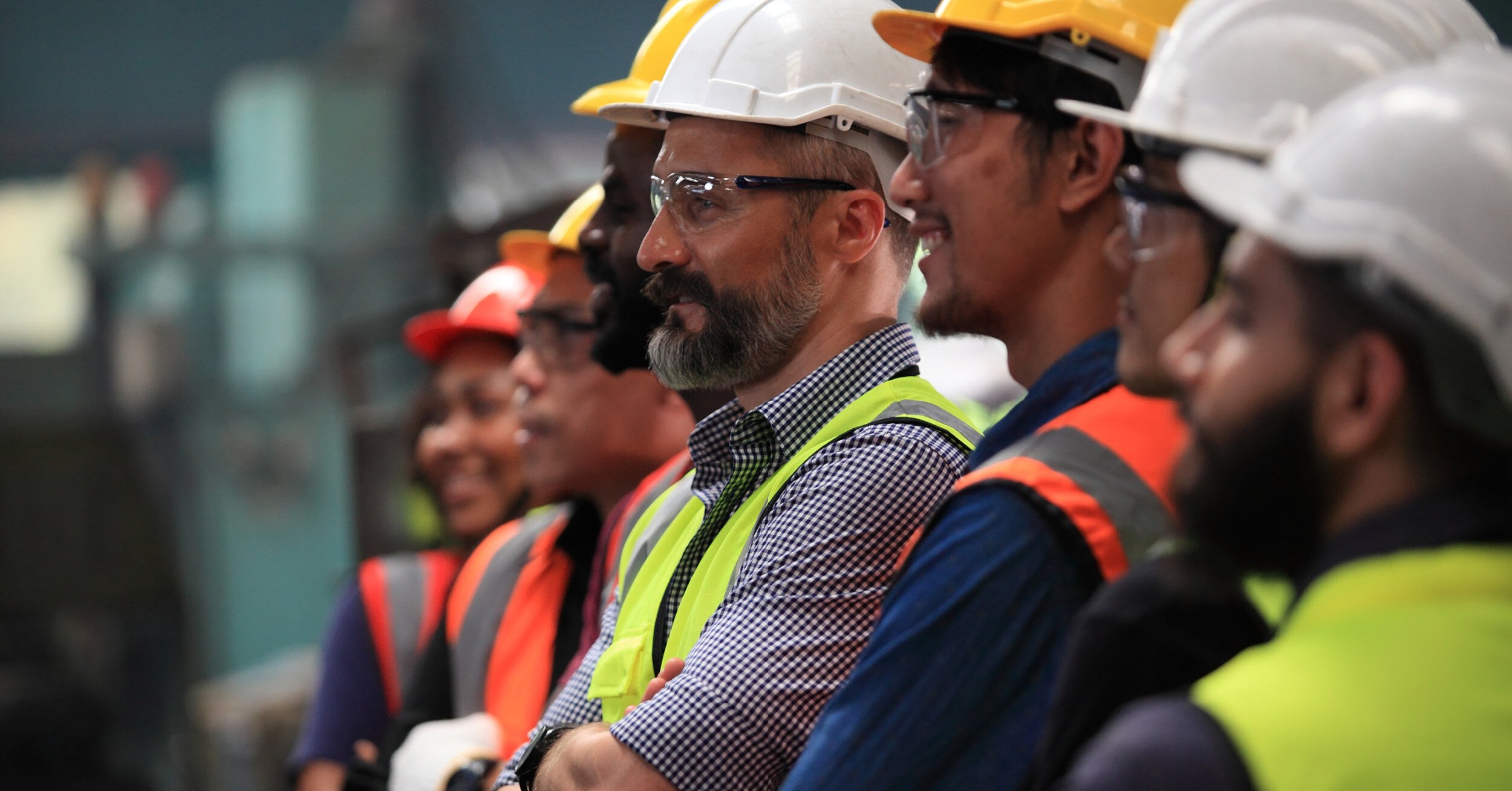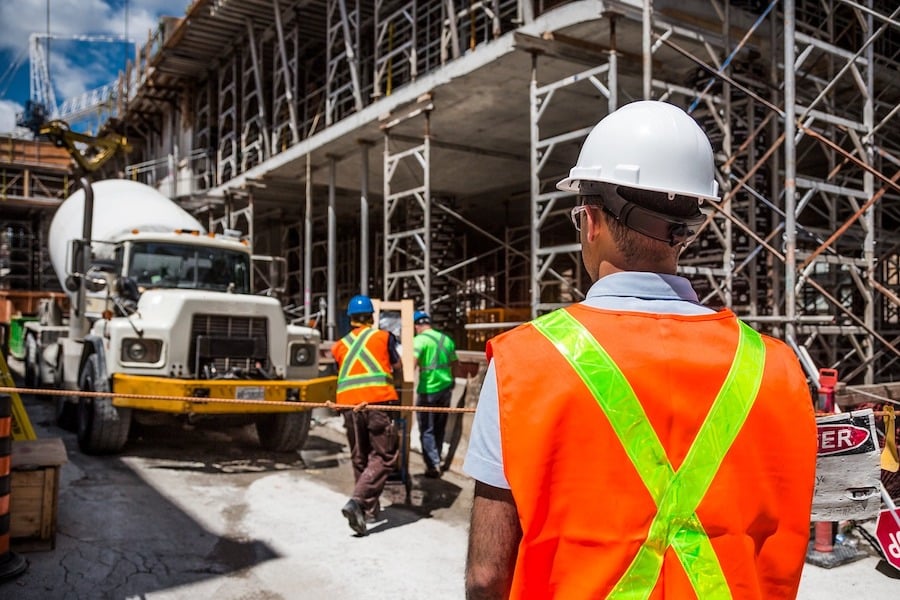The Impact of New Tariffs and Labor Shortages on GMP Projects
February 20th, 2025
2 min. read
By Eric Lehmann, Sr. Account Executive | Construction Practice Lead

Guaranteed Maximum Price (GMP) projects are designed to offer cost certainty, but external economic forces can quickly change the equation. Two of the biggest challenges facing the construction industry today—new tariffs and labor shortages due to deportations—are driving up costs, delaying projects, and increasing contractual complexity.
Understanding these issues is essential but so is knowing how to navigate them. Whether it’s adjusting contracts, securing materials early, or staying vigilant about workforce trends, proactive planning can help mitigate risk.
Rising Material Costs Due to Tariffs
Tariffs on key construction materials like steel and aluminum have already increased domestic prices by nearly 10%. Now, new federal policies are introducing a 25% tariff on all imported steel and aluminum, compounding the cost burden on contractors and developers. Given that steel and aluminum are fundamental to most construction projects, these rising costs can easily push a project over its agreed GMP.
What You Can Do:
- Review Contract Terms – Ensure contracts have price escalation and after-imposed tax clauses to account for tariff-driven cost increases.
- Secure Materials Early – Lock in supplier agreements before additional tariffs take effect to mitigate unexpected expenses.
- Diversify Sourcing – Explore alternative suppliers or domestic manufacturers who may offer more stable pricing.
Contractual Adjustments and Risk Allocation
GMP contracts often include clauses to address unforeseen cost changes, but with tariff fluctuations and labor instability, contractors and project owners should reassess their agreements to ensure they fairly distribute risk. Consider the following protective measures:
- Force Majeure Clauses – To account for significant cost spikes due to policy changes.
- Price Escalation Clauses – To allow for contract price adjustments if material costs rise beyond expected levels.
- After-Imposed Tax Clauses – To ensure contracts can be adjusted if new tariffs or taxes are introduced post-signing.
Project Delays and Supply Chain Disruptions
Tariffs don’t just drive up material costs—they can also disrupt supply chains. With steel, aluminum, and lumber all subject to fluctuating trade policies, lead times for essential materials are becoming increasingly unpredictable. A 25% tariff on Canadian goods, for instance, is projected to reduce U.S. GDP by 1.6%.
What You Can Do:
- Monitor Supply Chain Trends – Stay ahead of delays by regularly assessing supplier lead times and availability.
- Build in Contingencies – Account for potential delays in project timelines and budget buffers to absorb price shifts.
- Communicate Early with Stakeholders – Keeping clients and subcontractors informed helps manage expectations and avoid last-minute surprises.
Labor Shortages Due to Deportations
The construction industry relies heavily on skilled immigrant labor. With increasing deportation policies, experts estimate that up to 1.5 million workers could be removed from the sector. A shrinking workforce leads to:
- Higher wages, further driving up project costs.
- Longer project timelines, with fewer skilled workers available.
- Disruptions across the industry, as companies compete for a smaller labor pool.
Additionally, labor shortages don’t just affect construction workers—every 500,000 immigrants removed from the workforce results in 44,000 U.S.-born workers losing their jobs. The impact extends beyond job sites to the broader economy.
What You Can Do:
- Assess Workforce Gaps – Identify potential labor shortages early and adjust hiring strategies accordingly.
- Invest in Workforce Development – Upskilling current employees can help fill critical skill gaps.
- Adjust Contract Language – Ensure contracts include labor shortage clauses to account for schedule adjustments and additional compensation when labor availability impacts project timelines.
Regulatory and Compliance Considerations
As labor shortages tighten, maintaining regulatory compliance and safety standards remains a challenge. Construction firms should focus on:
- Documenting Workforce Changes – Ensure all employment and work authorization records are up to date.
- Leveraging Technology – Digital workforce management tools can improve efficiency and compliance tracking.
- Exploring Alternative Hiring Strategies – Apprenticeship programs, automation, and subcontractor partnerships can help offset workforce constraints.
New tariffs and labor shortages are reshaping the construction industry, making it critical for GMP projects to stay agile and proactive. While some factors are beyond direct control, contractors and developers can protect their projects through strong contract management, strategic material sourcing, and workforce planning.
If you’re looking for ways to minimize risk and optimize your project strategy, we’re here to help.
Eric Lehmann, Sr. Account Executive | Construction Practice Lead
After starting his career as a logistics specialist in the U.S. Navy, Eric then turned to insurance. He has been in the insurance industry for nearly 15 years including the past three at McClone. As McClone’s construction practice lead, he brings a deep understanding of the unique insurance and compliance needs of our construction clients. In addition to working directly with clients, Eric works with carrier partners and construction association partners on innovative ways to develop coverage enhancements and education programs for construction clients. Eric provides program analysis, recommendations and service to his clients ensuring that they have a clear understanding of their programs and coverage. He has experience in a range of insurance issues relevant to construction businesses including risk management, subcontractor default insurance, commercial insurance, casualty insurance and more. Eric is a Certified Insurance Counselor, a member of the Associated Builders & Contractors of Wisconsin’s Legislative Committee and sits on the Board of Directors for the Construction Financial Management Association of Northeast Wisconsin. He holds a Master’s in legal studies from the Washington University School of Law and a BA in business administration and management from Clarke University. Married for 16 years, Eric has two sons, ages 14 and 10. He enjoys spending time with his family outdoors, traveling, golfing and keeping active through running.
Topics:









